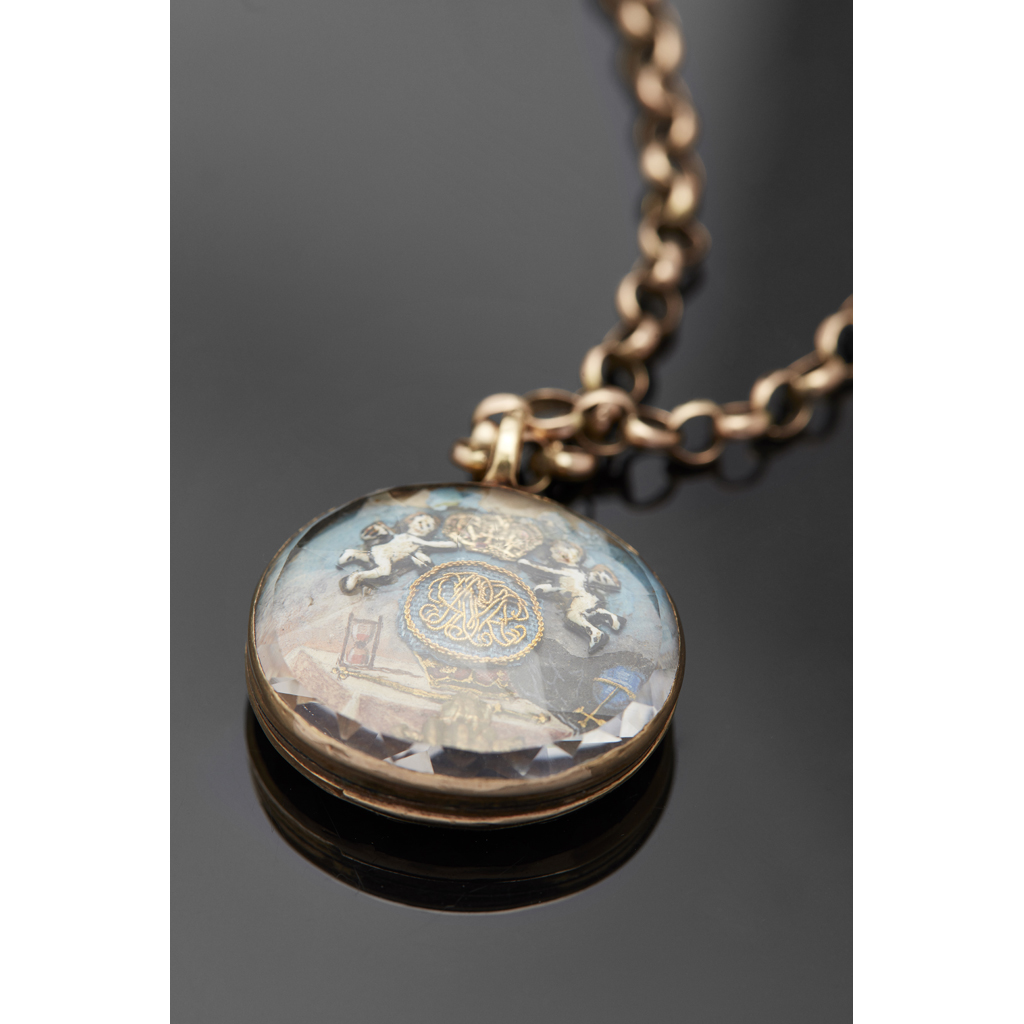A Stuart period crystal momento mori pendant
£2,250
Jewellery, Watches, Silver & Coins
Auction: 13 March 2018 at 11:00 GMT
Description
of oval form, simple gold mount, the facetted crystal enclosing a bullion wire work monogram with a pair of flying cupids in white holding a crown, other symbols include an anchor, hour glass, sceptre, heart pierced with an arrow, all symbols of mortality and earthly power, the rear with plaited hair, later gold chain
Dimensions
Width: 20mm
Footnote
It is said that the fashion for this type of jewellery began after the execution of King Charles I in 1649 when adherents to the Stuart cause wished to wear, concealed about their person, a token of remembrance to their martyred monarch.
After the restoration of the monarchy in 1660 such Stuart ‘death jewels’ were openly worn. These adornments acted as a catalyst for the popularity of the wearing of such pendants and other memento mori jewellery to commemorate the life of a deceased loved one or conversely to act as a reminder to the living of the frailty and uncertainly of life at a time when death stalked the land through the agency of pestilence and other ills. Very often these ‘death jewels’ enclosed a macabre souvenir of the deceased – generally a lock of hair. The mat or cushion here is encircled by gold or gilt wire or thread in which is found the cypher or monogram of the deceased;
the cypher or monogram as set within this pendant could possibly be read as ‘RAAR’ reversed and entwined and therefore maybe referring to the last Stuart monarch of Great Britain and Ireland, Queen Anne? Anne died on the
1st August 1714.
This crystal has been painted with various devices or symbols of mortality and erstwhile earthly power. On the table is depicted a crown, sceptre, and hourglass. Beside the table to the right is an overturned orb, whilst in the front of the table is shown a skull and its accompanying crossbones and, finally, above the cypher or monogram are two putti holding aloft a crown, perhaps as an illusion to the deceased’s soul being carried to the dominion of death.
All the devices and symbols portrayed here were commonly employed upon all manner of items and objects that were considered memento mori ranging from jewellery, together with seal fobs, paintings both in portraiture and still life as well as sculpture. They were, of course, liberally carved upon grave or tomb stones and displayed upon the entablature of funerary monuments and mausolea as a reminder of the transitory condition of life

